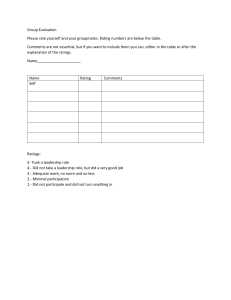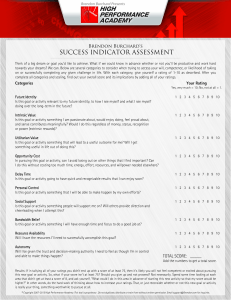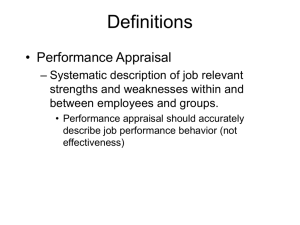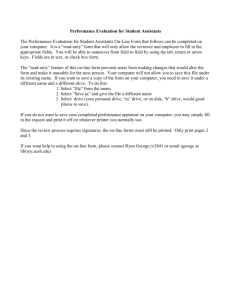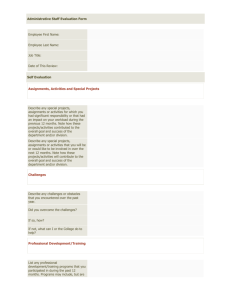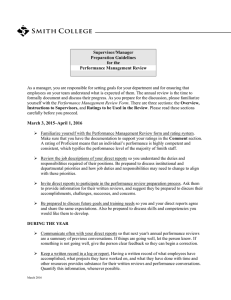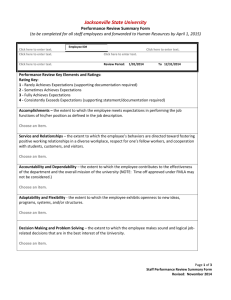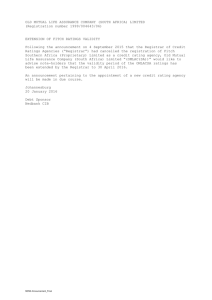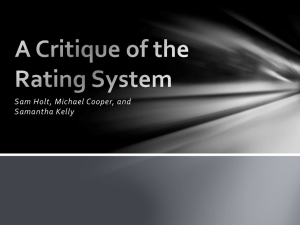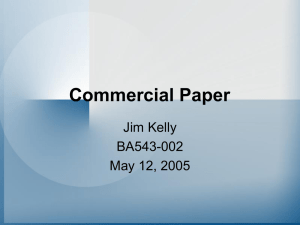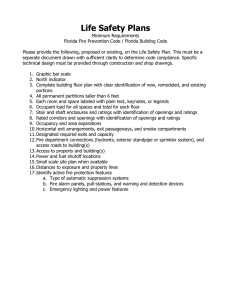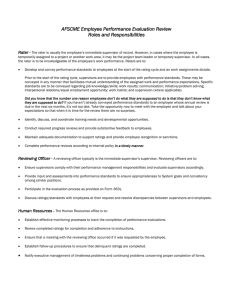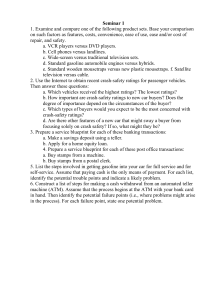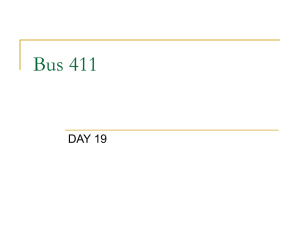Performance Differentiation Considerations
advertisement
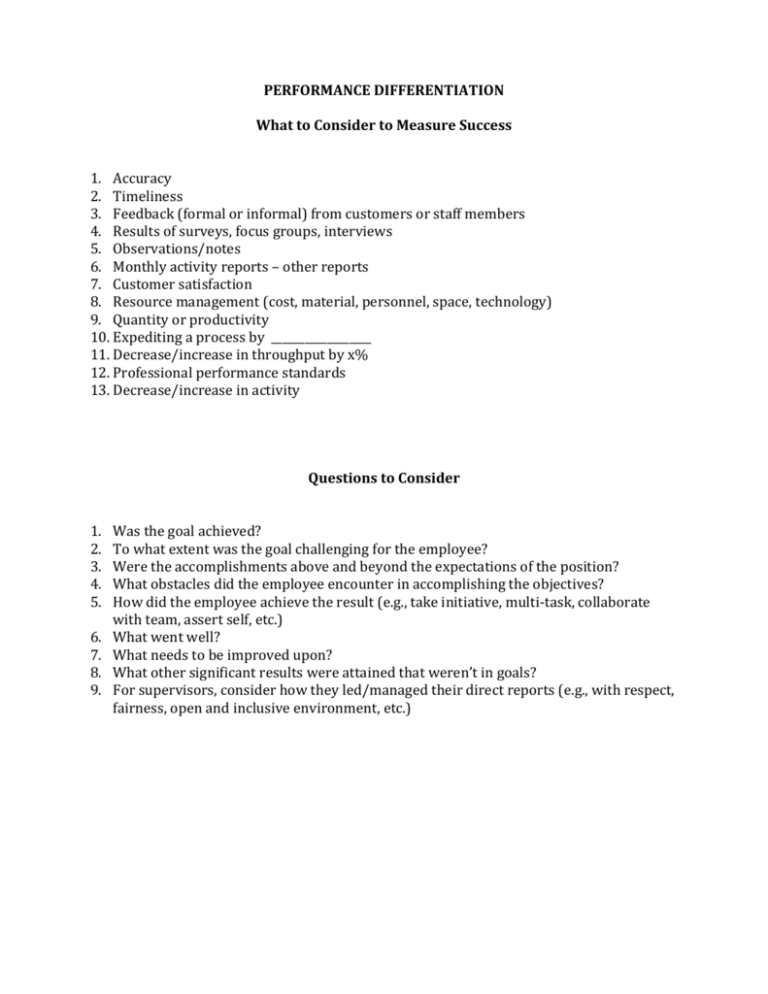
PERFORMANCE DIFFERENTIATION What to Consider to Measure Success 1. Accuracy 2. Timeliness 3. Feedback (formal or informal) from customers or staff members 4. Results of surveys, focus groups, interviews 5. Observations/notes 6. Monthly activity reports – other reports 7. Customer satisfaction 8. Resource management (cost, material, personnel, space, technology) 9. Quantity or productivity 10. Expediting a process by __________________ 11. Decrease/increase in throughput by x% 12. Professional performance standards 13. Decrease/increase in activity Questions to Consider 1. 2. 3. 4. 5. 6. 7. 8. 9. Was the goal achieved? To what extent was the goal challenging for the employee? Were the accomplishments above and beyond the expectations of the position? What obstacles did the employee encounter in accomplishing the objectives? How did the employee achieve the result (e.g., take initiative, multi-task, collaborate with team, assert self, etc.) What went well? What needs to be improved upon? What other significant results were attained that weren’t in goals? For supervisors, consider how they led/managed their direct reports (e.g., with respect, fairness, open and inclusive environment, etc.) Rater Errors Error Description Halo/Horn Assign high (or low) ratings based on only a few areas of performance. Comparison Compare performance to other individuals at the exclusion of job standards and requirements. Attribution Minimize achievement by attributing performance to external causes. Strictness Opposite of leniency; consistently rating at low end of the scale. Tend to limit ratings to the middle of the scale Central Recency Ratings reflect only the most recent observations of behavior Leniency Consistently rating at the high end of the scale Primacy Ratings reflect only initial observation of behavior
